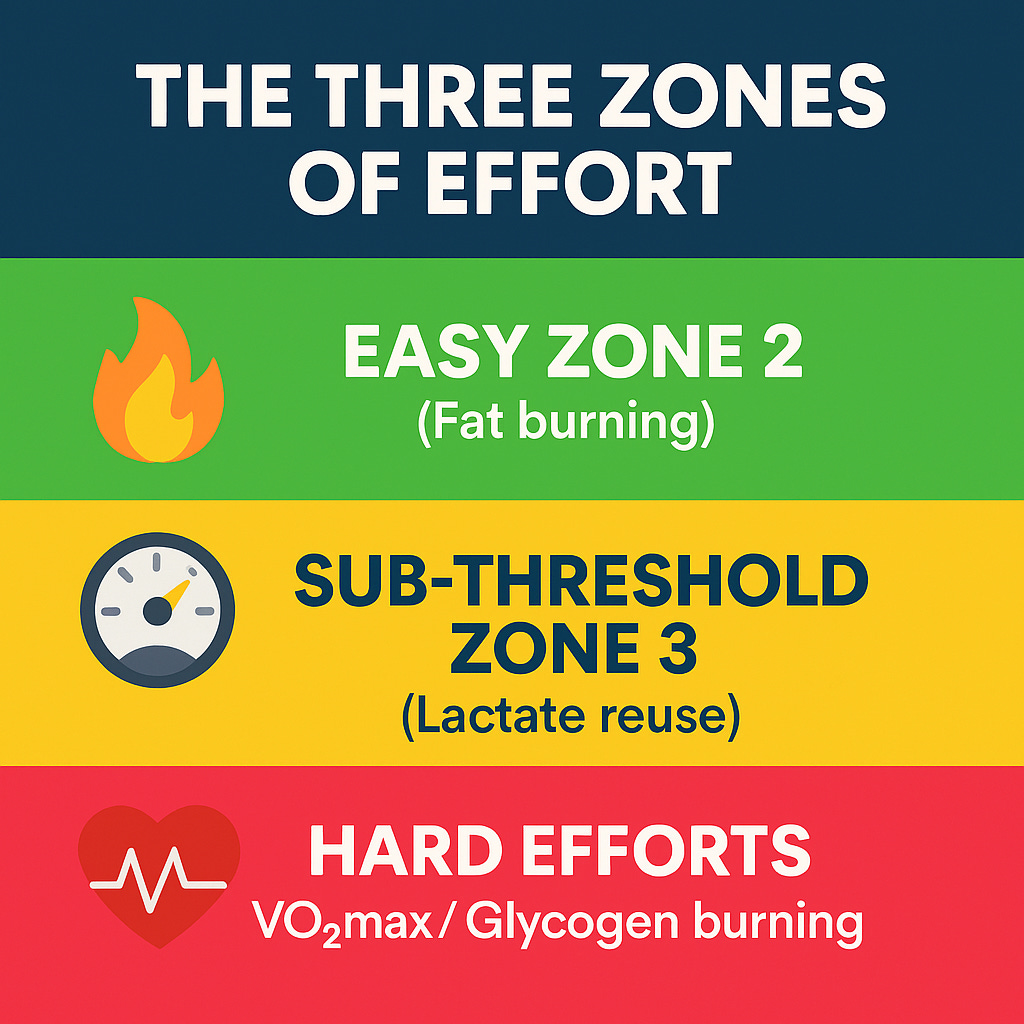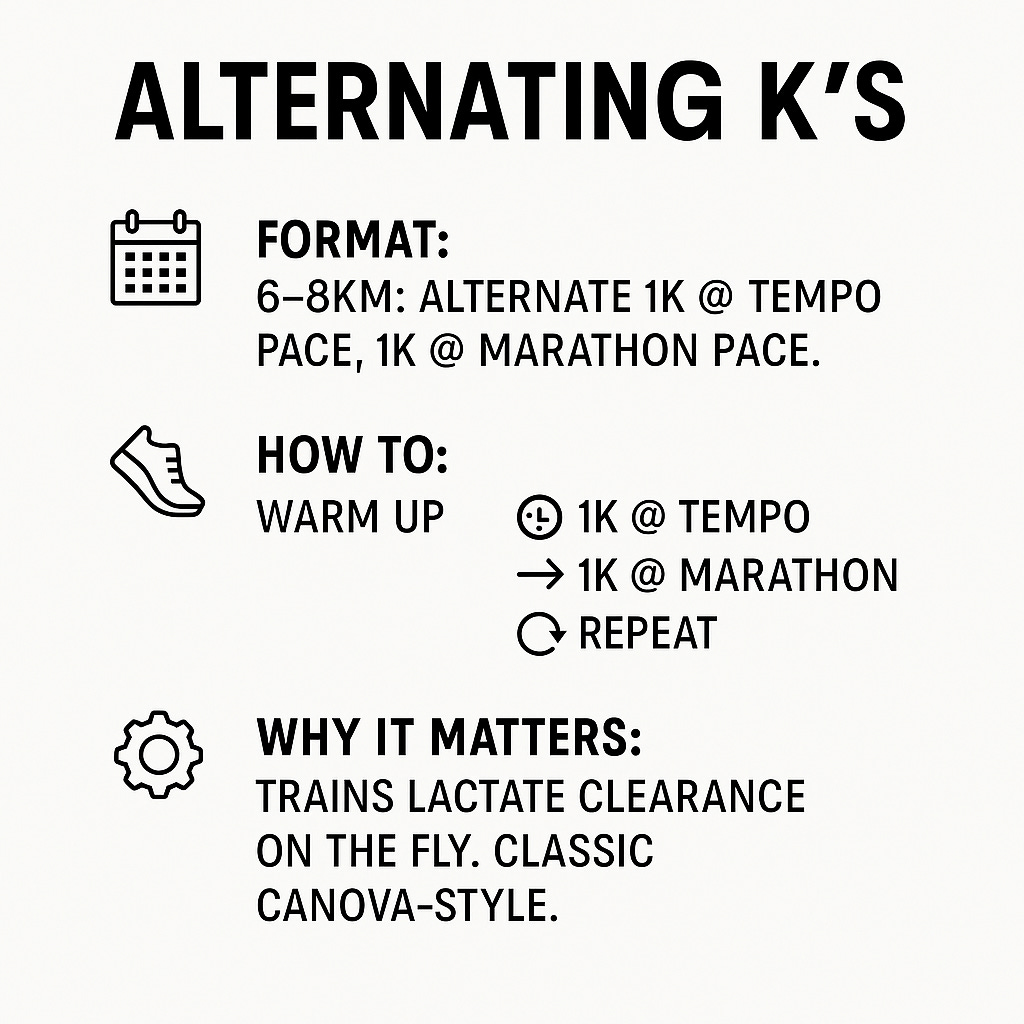You’re Not Under-training - You’re Just in the Wrong Zone | Sub-Threshold Explained
The 4 Degrees of Hyrox + Workout Of The Week - Alt Km's
Real Quick Though;
🏋🏼♂️If Running, CrossFit, and a Midlife Crisis Had a Baby aka Hyrox
📈 You’re Not Under-training—You’re Just Training in the Wrong Zone | Sub-Threshold Explained
📆 Workout Of The Week | Alternating K’s
🏋🏼♂️If Running, CrossFit, and a Midlife Crisis Had a Baby (Hyrox)
The moment my partner said, “I kind of want to do Hyrox,” I opened a blank doc and drew a Venn diagram.
Hyrox SZN is approaching here in Sydney, so it's fitting I did this.
I haven’t done Hyrox, but I’ve thought about doing Hyrox. Which, in fitness circles, is basically halfway to buying the shoes.
It started innocently. You know, just a few reels here and there on Instagram. Then I went to YouTube and saw a hype video. The sled push looked doable... I'm pretty good at that. Those wall balls look brutal, but I'm kinda good at that. Oh no... lunge walks with super heavy weight? Ah - Not so good at that as I'll be super sore the next day, but I'm a runner, so I can make it up in the run, right?!
I stayed strong, but then I Googled “Hyrox training gyms near me.” You know, just research, right for a friend, right?! Then my runner friends started doing it. Then the non-runners started talking about it and throwing up memes!
Then my partner casually said, “I kinda wanna try Hyrox.” And that’s when I freaked. Not emotionally, but graphically.
I opened a blank doc and made a Venn diagram based on all the people that I know who somehow end up doing Hyrox.
Just four circles:
Runner
Triathlete
CrossFit/Spartan/Tough Mudder (aka Obstacle Course Junkie)
Hybrid Athlete & Gym Bruh/Brah
And in the center? Hyrox.
A Frankenstein’s monster of endurance and ego. It was the only way I could make sense of it all. Because Hyrox isn’t a sport. It’s a glitch in the matrix. It’s what happens when a runner starts lifting, a lifter starts jogging, and a CrossFitter gets bored of doing those really weird pullups where they violently fling their bodies up and down (Kipping Pullups?!).
And then I wasn’t just curious...I was obsessed. Obsessed with the overlap, obsessed with the chaos, and even obsessed with the compromise. That weird middle ground where everyone is slightly undertrained and super overconfident.
And to keep it 100 -- I think that might be the most real fitness vibe out there, even though I love being a specialist, there is something to being a generalist that is just pushing their body to the limit for as long as their glycogen stores can take it (60-90 minutes).
This ain’t it? Agree with me? Either way - comment below, replying to this email, on Instagram or YouTube.
📈You’re Not Undertraining—You’re Just Training in the Wrong Zone | Sub-Threshold Running
Most runners miss this, and not because they’re lazy or undisciplined. It’s worse than that. They’re well-intentioned but they train like a toddler on espresso—either full throttle or horizontal.
Meanwhile, the real gains are hiding in that awkward, unsatisfying middle. The one that doesn’t impress anyone on Strava or leave you gasping for air.
It’s called sub-threshold running, and if you want to stop blowing up halfway through your race? You’re gonna want to flirt with it this effort more often.
Deep Run Science Moment: The Zone Nobody Brags About (But Everyone Needs)
Let’s get nerdy—but keep it digestible.
There’s a moment, somewhere between chill jog and race-face grind, where the magic happens. It’s called your lactate threshold—the pace or effort level where your body starts producing more lactate than it can clear.
Now, before you zone out at the word “lactate,” here’s the key idea:
Lactate isn’t bad. It’s not some waste product you need to purge. In fact, your body uses it as a fuel—like a backup energy system that kicks in when the aerobic one starts tapping out.
Here’s where it gets juicy:
The Physiology Breakdown (Huberman voice engaged)
Your aerobic system (think fireplace, slow burn) uses fat and oxygen to keep you going.
Your anaerobic system (think rocket fuel canister) uses glycogen and doesn’t require oxygen, but it’s explosive and unsustainable.
Threshold training lives at the intersection, just before that canister explodes.
Running just below threshold trains your body to:
Use lactate more efficiently as fuel
Delay fatigue by improving mitochondrial function (hello, endurance engines)
Increase capillary density (better blood and oxygen delivery)
You’re literally teaching your body to stay composed under pressure. Like Navy SEAL-level chill… but in your hamstrings.
Rhonda Patrick would call this metabolic flexibility—your body’s ability to shift gears without blowing up the engine. And it’s what separates consistent racers from burnout-prone hobby joggers.
However you want to consume the rest — through your eyes, ears, or motion pictures — it’s ready for your next workout here.
📆 Workout Of The Week | Alternating Kilometers (K’s)
What is it?
A steady, sneaky-hard session that toggles between 1k at tempo pace and 1k at marathon pace. Usually 6–8km total. It builds fatigue without breaking you. Think of it as a dialed-up progression run, not an all-out burn.
How to do it:
Start with a 10–15 min warm-up jog.
Then go:
1k @ tempo pace (roughly your one-hour race effort)
1k @ marathon pace (controlled but still focused)
Repeat that back-and-forth pattern 3–4 times (6–8km total).
Cool down for 10–15 min easy.
Why it matters:
This one’s gold for teaching your body how to clear lactate while still moving. That’s endurance 101 — recover on the run, not at the stoplight. It’s a staple in Renato Canova’s playbook for a reason.
Bonus: It sharpens your pacing instincts. Forces you to stay mentally locked in, without checking out during the “easier” parts.
Simple, clean, effective.
Do it once every couple of weeks in your build. Watch your race gears get smoother.






